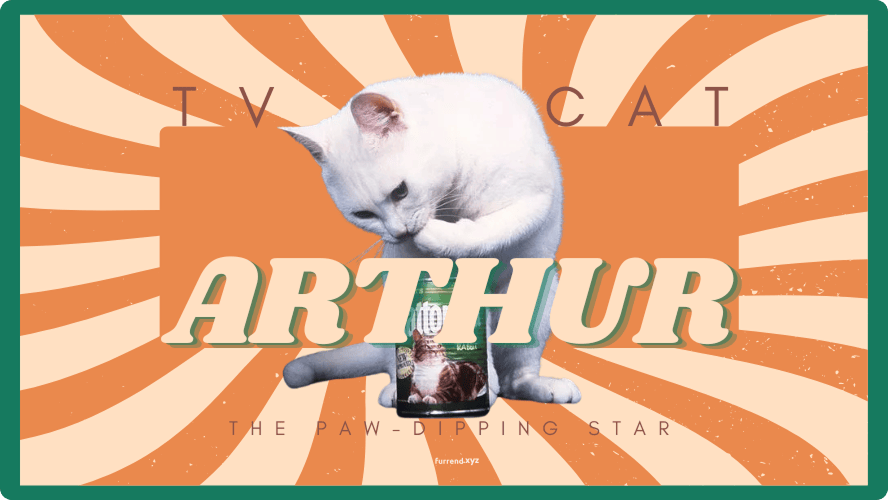
November 17, 2025
Arthur the Paw-Dipping TV Cat Who Became a 1960s Icon
How a rescue cat, a single quirky habit, and a whirlwind of fame, rumors, and court drama shaped one of Britain’s most memorable pet food ad campaigns.
Long before pets ruled social media feeds, a rescue cat in Britain found fame the old-fashioned way: by dipping his paw into dinner on national television. His name was Arthur, and his path to stardom came with runaway success, Cold War era rumors, a courtroom battle over his ownership, and even a brief disappearance that made national headlines. For a decade, he was one of the most recognizable animals in British advertising, all because of one gentle, irresistible quirk.



Arthur was found at Wood Green Animal Shelter at Wood Green Animal Shelter and was adopted in 1964 by Australian actress June Clyne and her boyfriend Tonye Manning. One day, as they watched him scoop food from a tin with his paw, Clyne sensed something unique. She contacted the advertising agency Geers, hoping they might see what she did.
Well, they did. Advertisers loved the paw-dip immediately, and Arthur was cast in a television commercial for Kattomeat, a cat food brand produced by Spillers Ltd. Viewers loved him right away. The ads were simple, charming, and centered entirely on Arthur’s unforced dining ritual. Then sales went up, the campaign expanded, and the former shelter cat Arthur unexpectedly became a small cultural moment in 1960s Britain.
In the hit TV show Mad Men, Don Draper once said people spend more money on dog food than baby food. Around the same time in real life, Arthur was proving something similar: pet advertising could shape habits, trends, and loyalty. Between 1966 and 1975, he appeared in an estimated 300 ads, a staggering number for any animal actor, let alone a former stray. In 1992, the brand even named one of its product lines “Arthur’s,” a nod to his lasting influence.
Fame, however, brought its own mythology. One rumor claimed Arthur’s teeth had been removed to force him to use his paw. Paw-dipping is actually a normal feline behavior, and a later court case confirmed the claim was false. Arthur simply ate the way he liked.
His story soon took a stranger turn. When Clyne died in 1967, a legal dispute erupted over ownership of the now-valuable cat. Manning and Clyne’s mother in Australia each claimed Arthur belonged to them. What followed was a High Court case complete with accusations of forged documents and even a bizarre claim that the Russian Embassy had offered Arthur “political asylum.” Manning ultimately lost and was ordered to pay Spillers’ legal costs, which came to about £3,000.
Arthur’s life didn’t quiet down after that. In 1974, he was stolen from a cattery where he was living with Jeanne Green. Manning later claimed the catnappers had contacted him and were holding Arthur until Spillers recognized him as the rightful owner.
Arthur ended up with Arthur Turvey, a 76-year-old former publican who believed he had simply taken in a stray. Only when his son-in-law noticed the cat eating with his paw did they realize who he might be. Green reclaimed Arthur, and the Turveys received a £500 reward from Spillers and the promise of a kitten.
What audiences never knew at the time was that the Arthur they watched wasn’t a single cat. To keep the long-running campaign alive, three cats, Arthur I, Arthur II, and Arthur III, played the role over the years, each trained to keep the signature paw-dip on screen.
Arthur started as a shelter cat with a quiet, endearing habit. He became one of the most recognizable advertising animals of his era and helped shape a new understanding of how authentic, unscripted pet behavior connects with people. In many ways, the delight audiences find today in natural, quirky pet content traces back to a white rescue cat in the 1960s who simply ate the way he always had, which was paw first, without trying to be famous at all.



More stories
Furrend circle
Be the first one to hear about updates